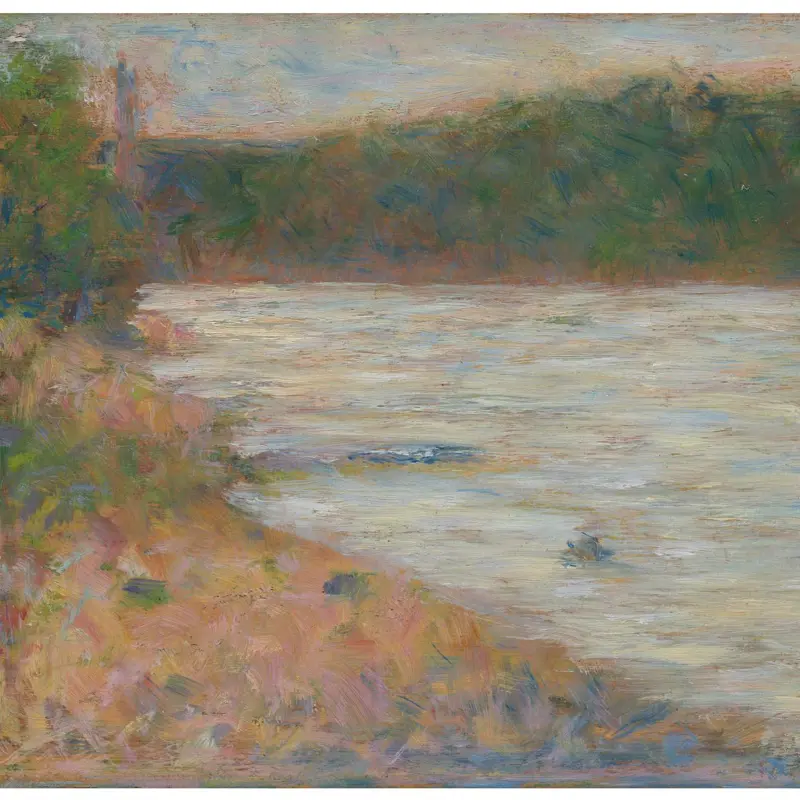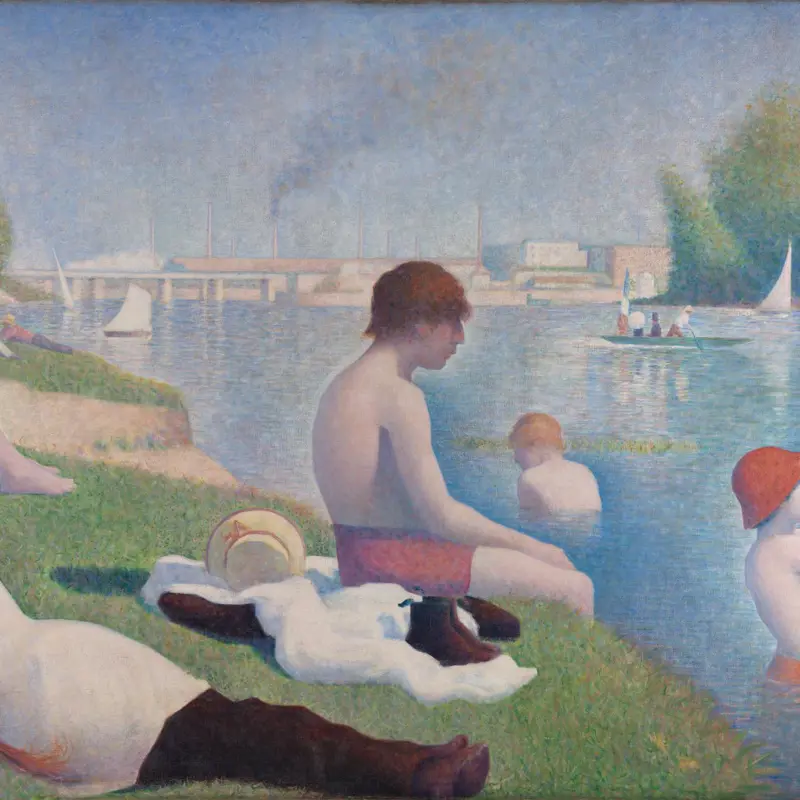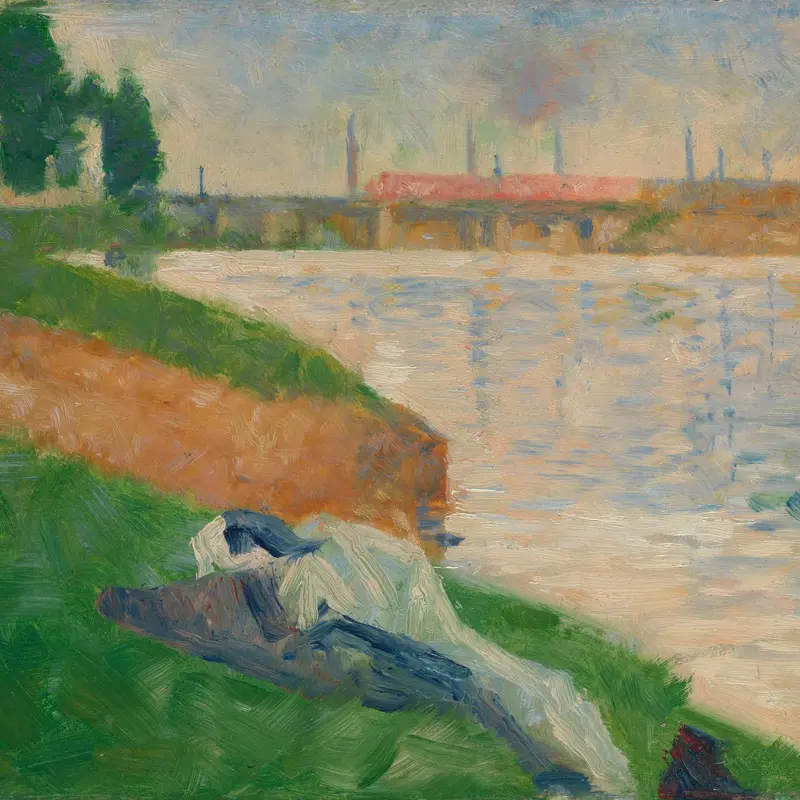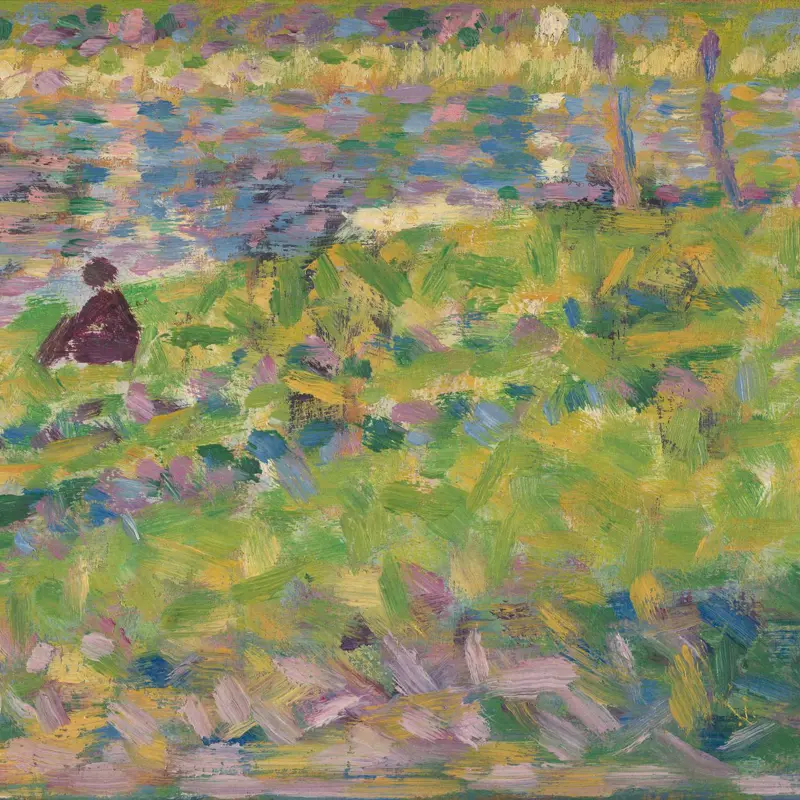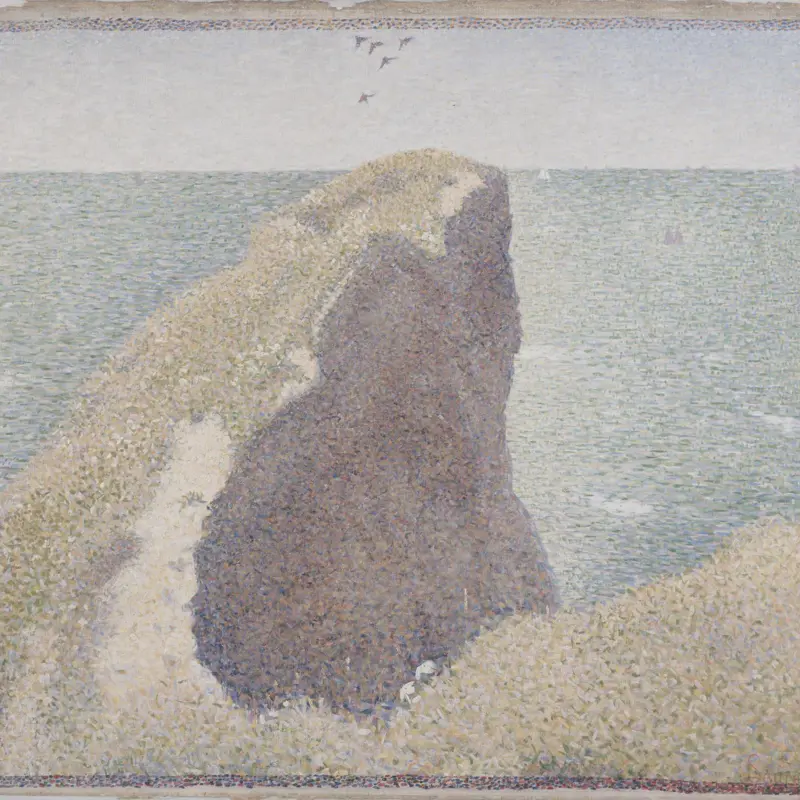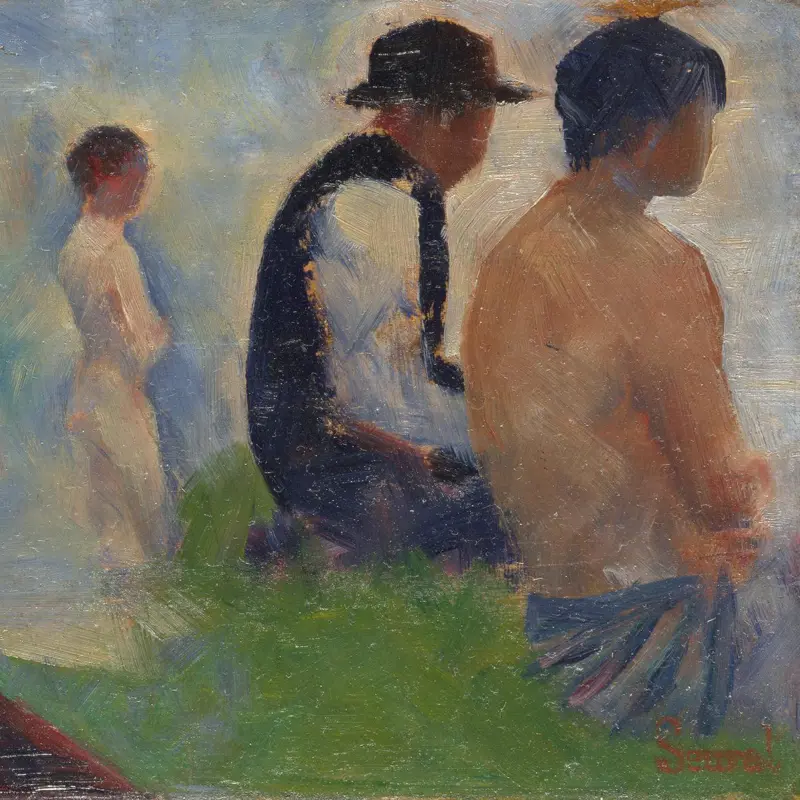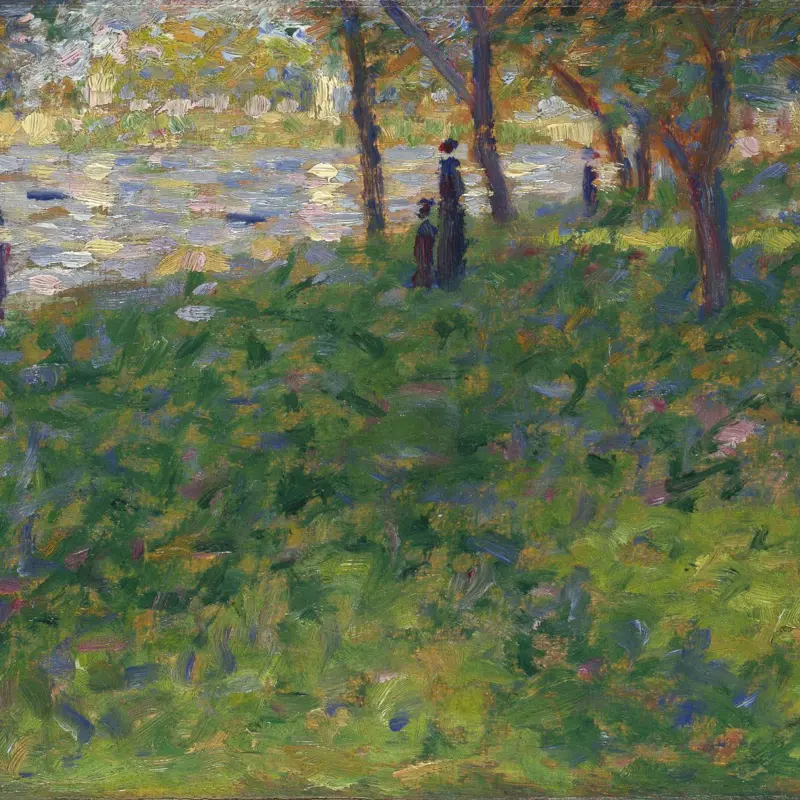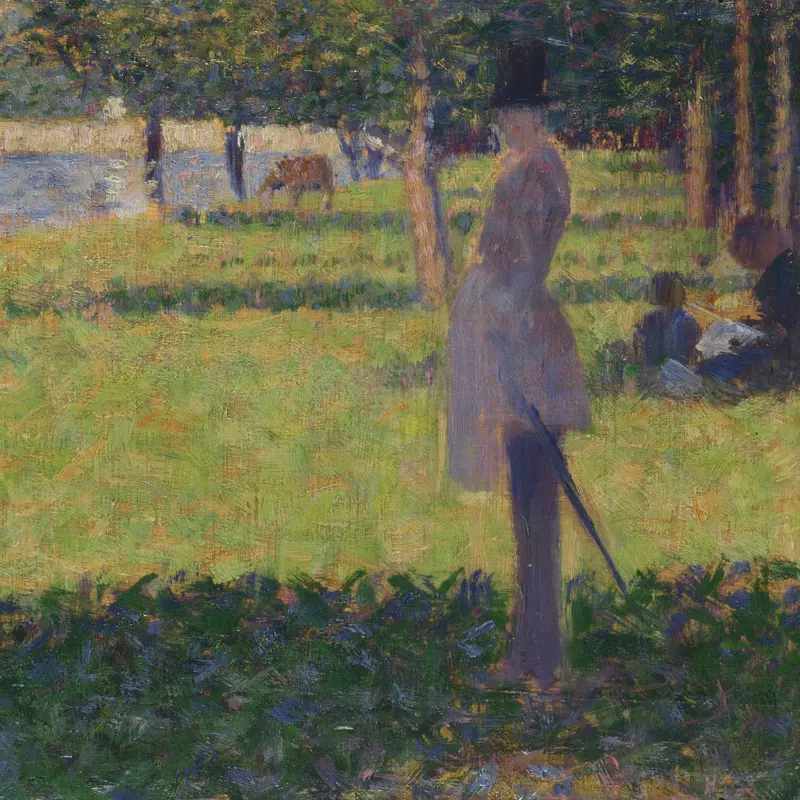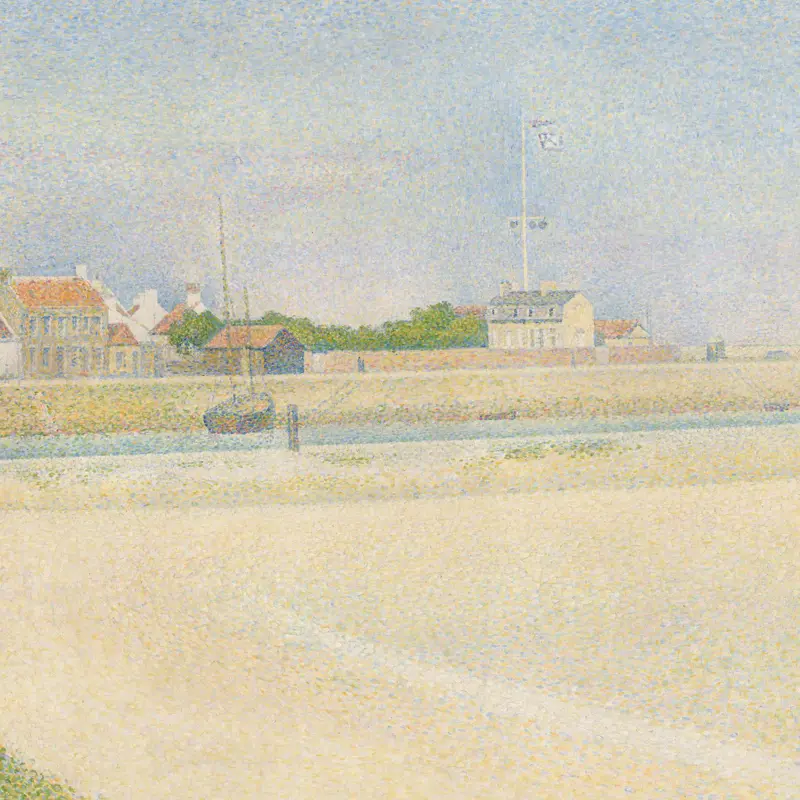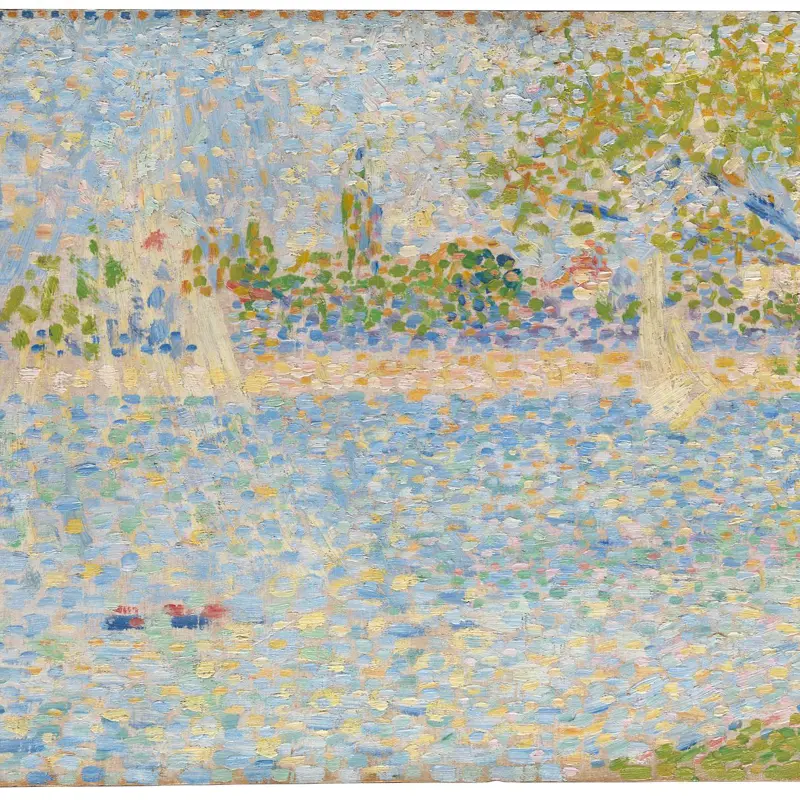Georges Seurat, 'The Morning Walk', 1885
About the work
Overview
This panel was most likely painted in 1885 and relates to a medium-size canvas, The Seine at Courbevoie (now in a private collection in Paris). Seurat may have painted it before he decided to produce a finished picture of this particular view of the river, or it may be a preparatory study.
The vertical format is unusual for Seurat, but it allowed him to construct the composition as a series of stacked horizontal bands formed by the foreground, the river, the far riverbank and the houses and trees of Courbevoie in the distance.
Painting on location, he worked rapidly, leaving traces of the bare wood of the panel visible between the brushstrokes. Although he had developed his pointillist technique of painting in small dots of colour by 1885, his debt to Impressionism can be seen in the large fluid strokes of unmixed colour, particularly on the water. Seurat modified them according to the object or surface they describe.
Key facts
Details
- Full title
- The Morning Walk
- Artist
- Georges Seurat
- Artist dates
- 1859 - 1891
- Date made
- 1885
- Medium and support
- oil on wood
- Dimensions
- 24.9 × 15.7 cm
- Acquisition credit
- Presented by Heinz Berggruen, 1995
- Inventory number
- NG6557
- Location
- Room 44
- Collection
- Main Collection
Provenance
Additional information
Text extracted from the National Gallery’s Annual Report, ‘The National Gallery Report: April 1995 – March 1996’.
Exhibition history
-
2009Georges Seurat: Figure in SpaceKunsthaus Zürich2 October 2009 - 17 January 2010Schirn Kunsthalle Frankfurt4 February 2010 - 9 May 2010
-
2017Seurat to Riley: The Art of Perception.Compton Verney8 July 2017 - 1 October 2017Holburne Museum of Art21 October 2017 - 21 January 2018
Bibliography
-
1959H. Dorra and J. Rewald, Seurat: L'oeuvre peint; biographie et catalogue critique, Paris 1959
-
1961C. de Hauke, Seurat et son oeuvre, Paris 1961
-
1969P. Courthion, Georges Seurat, Paris 1969
-
1988S. De Pury (ed.), Berggruen Collection (exh. cat., Musée d'art et d'histoire Geneva, 16 June 1988 - 30 October 1988), Genève 1988
-
1991R.L. Herbert, Seurat (exh. cat. Galeries Nationales du Grand Palais, 9 April - 12 August 1991; Metropolitan Museum of Art, 24 September 1991 - 12 January 1992), Paris 1991
-
1991R. Kendall, Van Gogh to Picasso: The Berggruen Collection at the National Gallery (exh. cat. The National Gallery, 16 January - 21 April 1991), London 1991
-
1996National Gallery, The National Gallery Report: April 1995 - March 1996, London 1996
-
1997J. Leighton and R. Thomson, Seurat and the Bathers, (exh. cat. The National Gallery, 2 July - 28 September 1997), London 1997
-
2001
C. Baker and T. Henry, The National Gallery: Complete Illustrated Catalogue, London 2001
About this record
If you know more about this work or have spotted an error, please contact us. Please note that exhibition histories are listed from 2009 onwards. Bibliographies may not be complete; more comprehensive information is available in the National Gallery Library.

